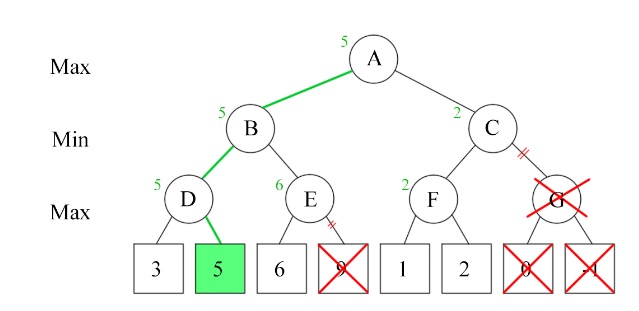The statement “Backtracking = DFS + Pruning” is a concise and intuitive description of the backtracking algorithm. To understand this, let’s break down the key concepts in this equation.
Depth-First Search (DFS) Algorithm
DFS is an algorithm for traversing graphs or trees. It starts from the root node and explores as far as possible along one branch before backtracking to explore other branches. This search strategy is naturally suited for problems that require exploring all possible states, such as combinations or permutations.
Pruning Strategy
Pruning refers to the process of eliminating certain branches from consideration during a search to reduce the computational effort. The primary purpose of pruning is to avoid unnecessary calculations by stopping the search along certain branches when it’s clear that they will not yield a valid solution. For example, if you know that a branch cannot produce a valid solution, you can terminate the search for that branch early.
Backtracking Algorithm
The backtracking algorithm can be seen as a specific application or special case of DFS. It employs the DFS strategy by trying out all possible options (usually through recursion) and backtracking when it becomes clear that a particular choice does not lead to a valid solution. This process of “trying and backtracking” forms the core of the backtracking algorithm.
Combining the Three Concepts
Depth First Search provides the basic framework for backtracking, allowing the algorithm to explore each branch deeply.
Pruning is an optimization step added to DFS, with the goal of reducing the exploration of invalid or unnecessary states.
Therefore, the statement “Backtracking = DFS + Pruning” is a summary of the backtracking algorithm. It highlights that backtracking is not just a simple depth-first search but also includes pruning to enhance efficiency. Pruning makes the backtracking algorithm more efficient than pure DFS, especially when dealing with large search spaces, as it significantly reduces the computational burden and makes problem-solving more feasible.
Example: Alpha-beta Pruning Algorithm
Alpha-beta Pruning can be seen as a backtracking algorithm that enhances the depth-first search algorithm with pruning techniques.
Alpha-beta pruning: This is a technique used to reduce the number of nodes evaluated in the minimax algorithm in game theory.
Backtracking algorithm: Alpha-beta pruning can indeed be considered a form of backtracking, as it systematically explores potential solutions (in this case, game moves) and prunes paths that are guaranteed not to influence the final decision.
Depth-first search (DFS): Alpha-beta pruning typically operates over a tree structure using DFS, exploring nodes deeply before backtracking.
Pruning techniques: The key feature of alpha-beta pruning is the “pruning” part, where branches of the tree that cannot possibly affect the final decision are skipped.
–EOF (The Ultimate Computing & Technology Blog) —
loading...
Last Post: Teaching Kids Programming - Minimum Number of Chairs in the Room (Max Prefix Sum)
Next Post: The Computers at Early 2000s
